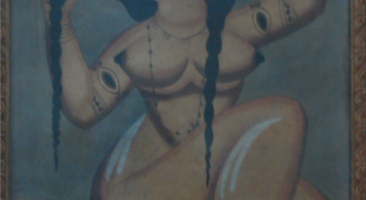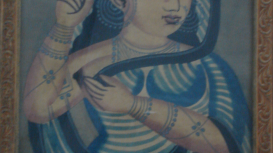The origin of Kalighat paintings is well known, but one cannot pinpoint an exact date or year in which the tradition began near the Kali temple in south Calcutta.
In the mid-eighteenth century, skilled patuas (rural folk painters) migrated to the urban centre for a better life, setting up shops near the temple. The paintings with mythological characters were sold as souvenirs to the thousands of pilgrims who flocked to the temple to pay respects. Over time, these painters adapted their wares for the urban crowd. From painting on scrolls back in the village, they started painting on pats (individual panels). While, initially, they made the colours from locally available ingredients, they gradually shifted to watercolour as well as adopted cheap factory-made paper to save time and energy. As the geographical and political location of the painters changed, they responded to their new environment with a change of subject and style, from religious paintings to social commentaries, where happenings in the city and the world informed the paintings.
However, at the turn of the twentieth century, cheap oleographs from Germany flooded the market, and hand-painted pats began to lose patronage. By 1930, the Kalighat paintings ceased production with artist families looking elsewhere for work to sustain themselves. The once popular Kalighat paintings became cultural artefacts as they caught the fancy of art collectors and historians. Western art historians such as W.G. Archer claimed that Kalighat paintings carried a Western influence, a theory refuted by many Indian art critics and curators who swore that these were truly Indian and modern.
Kalighat paintings acted as a model of authentic art forms in the early twentieth century when India was trying to forge a national identity, with many Western-trained painters rejecting the teachings in Calcutta’s art schools and turning to more indigenous sources. Today, Kalighat paintings are often called India’s ‘first moderns’.




